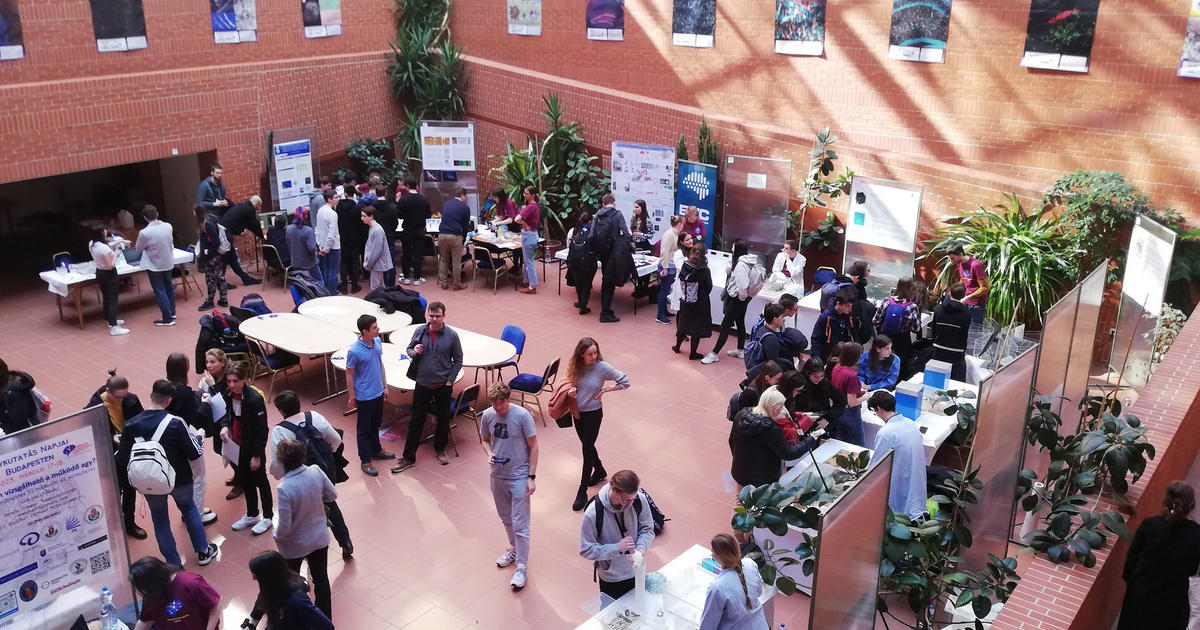DABI (Dana Alliance for Brain Initiatives) and EDAB (European Dana Alliance for the Brain) launched the Brain Research Week program 27 years ago. Capital programs have been organized since 2004 with the participation of researchers and volunteers from ELTE TTK, HUN-REN Institute for Experimental Medical Research, HUN-REN TTK, Pázmány Péter Catholic University and Semmelweis University. This year we were able to participate in programs in Debrecen, Pécs, Szeged and Budapest.
In Hungary, thanks to the Hungarian Neuroscience Society, this event is becoming more popular every year, which plays a serious role in popularizing science. Universities, research institutes, high schools, civic organizations and workshops will also be held at the event to present brain research, and even the youngest visitors are expected to be among the visitors.
Science theatre
This year, on March 13 and 14, we were able to learn about, among other things, the results of research on the transmission of nerve impulses, learning, and aging processes through behavioral, genetic and molecular studies. We can hear lectures about understanding dog speech, sleep processes, cell reprogramming, or brain electrodes.
In the building hall, visitors were informed that they could participate in different stations where they could collect stamps – if 10 were collected, they would receive small gifts. However, many people were not looking for the seals, but rather the tests themselves, which took place in the Science Theater.
At six stations, we were able to test our brains with the help of university students and teachers. First we were able to try out the lie detector, but although the visiting preschoolers said they would not lie about their afternoon nap, the task was more complicated than that. After the electrodes were attached to the body of the lucky person waiting for his turn, he had to draw from number cards and then deny the number of each card presented, even if the card drawn was among them. Through the data of the spirometer, heart rate, and skin resistance, it can be concluded which cards he did not tell the truth about, but rather acted on orders. If we lie to ourselves, we can move on to testing muscle strength. With the help of the device, the electrical activity generated by the activated motor units and muscle force is recorded.
The measurement starts again just by placing electrodes, and then you have to exert increasing force on the dynamometer every 5 kilograms, which is difficult, because you have to hold it.
Mind control car racing
Electrical potential changes associated with brain function are examined using an electroencephalogram, the wavelength of which is an electroencephalogram (EEG). During the test, electroencephalogram (EEG) signals are recorded when the eyes are open and closed, and the amount of alpha waves is compared with awake eyes and closed eyes. But if all that is not enough, we can also try mind control in computer games. It is already used in drones, robotic prosthetics, and wheelchairs, and is based on brain computer software and hardware. It detects, classifies and issues control commands for the electronic device. This also transmits signals by electrodes attached to the head, and can start the car racing computer game Cybathlon BrainDriver, which was developed directly for this purpose. Three instructions must be given by the brain: turn left and right, turn on the light.
If you are tired of experiments on yourself, you can see how little white mice or great white mice learn. In the latter locations, you have to overcome a lot of young children to see the animals up close, as they display social behaviour, for example. Here, the little mouse must decide whether he wants to be alone with a familiar mouse or a stranger.
Anyone who has arrived at the table can see that socially balanced mice prefer to be with themselves, but if a new mouse appears on the horizon, they are attracted to the social novelty and head toward it instead of the familiar mouse.
There was also a mouse maze test on direction, and movement coordination analysis on rodents.
Elsewhere, a professor introduced us to the electrical properties of neurons, but there was also a brain puzzle when we had to match the brains of living organisms to photographs. The Biology and Paleontology exhibit was free to visit, and we could also try out the science escape room, for the first time this year.














































